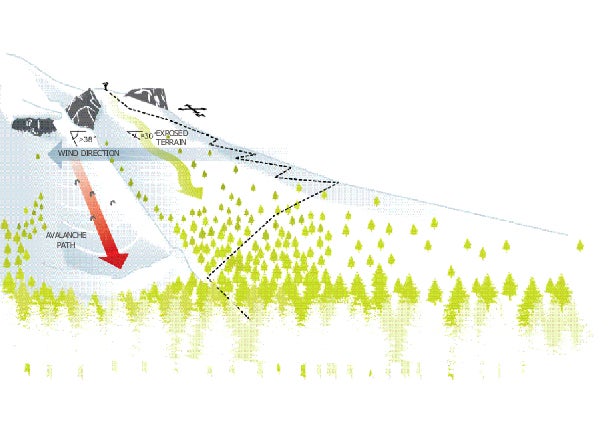There’s no substitute for a good avalanche course (check out for courses and locations), but here are some guidelines on how to skin up the mountain safely.
1. CHOOSE A ROUTE
Research your route ahead of time (maps, Google Earth, etc.). Try to stick to ridgelines and low-angle slopes (less than 30 degrees; peak avalanche danger is 38 degrees). This makes for easier and safer skinning and also requires fewer energy-draining kick turns to ascend.
2. CONSIDER THE ASPECT
In North America, powder-preserving north-facing slopes are most likely to develop persistent weaknesses over the course of the winter. In the spring, however, avoid south-facing slopes after midmorning, especially if it’s warm.
3. PLAY IT CONSERVATIVE
The safest route is often over hard-packed snow on the windward side of a ridge. Big, healthy trees indicate—but do not guarantee—slope stability.
4. IDENTIFY HAZARDS
Avoid “terrain traps” like rollovers (where a shallow slope suddenly becomes steep) and gullies (where avalanche debris funnels). If you must cross an avalanche-prone area, ski one at a time and know your escape routes (cornice-and-cliff-free runouts). If possible, minimize the risk by taking the shortest line between safe zones.


